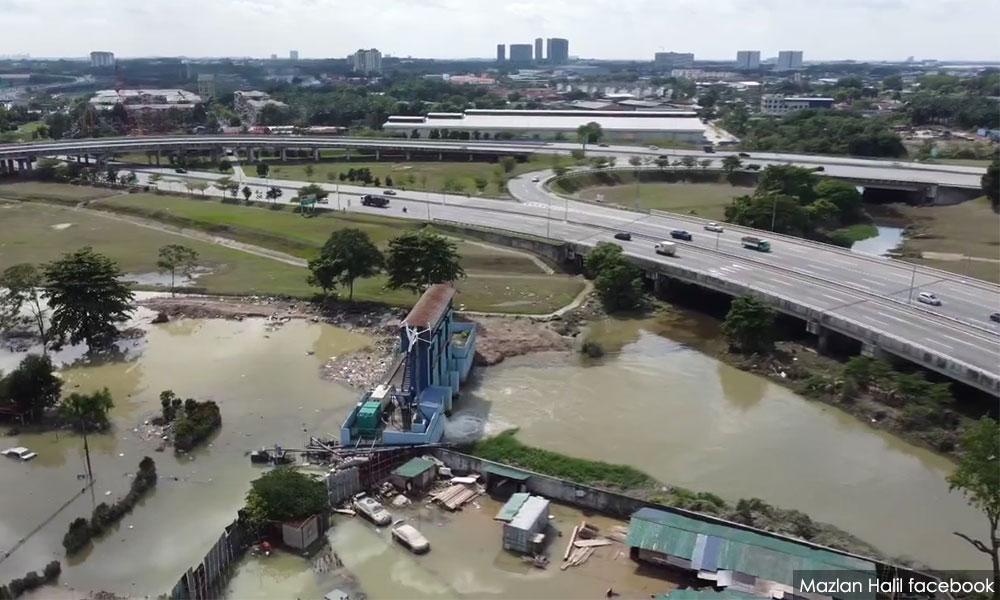Until the Federal Highway became operational in the 70s, the trunk road from Kuala Lumpur to Klang meandered through a maze of plantations –rubber and later oil palm trees.
The area where the Guinness Brewery is situated was known as Sungai Way Tin and down the road was Seafield Estate, now known as Subang Jaya – the first township off the highway.
Over the years, the trees on either side of the highway were hacked down, hillocks were cut and the ground was levelled – all in the name of development.
Today, except for a few trees that act as ornaments, the entire area has become a concrete jungle with townships replacing the plantations.
How and why did this happen?
When the Federal government deemed it fit to make U-turns and somersaults on policies on cutting hillsides, it was then accepted as a solution to the acute housing shortage in the Klang Valley.
Pleasing developers
When the state government converted estates and plantations and re-zoned the land use from agriculture to residential, it appeared to be a good source of revenue.
When the local government approves development plans and increases plot ratios and population density to please developers, they claim that owners are entitled to develop their land.
But when the actions of all three levels of government and when all these factors and unplanned development were combined, the result has been a catastrophe of unbelievable proportions as we have witnessed over the past two weeks.
Did anyone foresee the need for an upgrade of infrastructure before allowing change of land use and development on such a massive scale?

Did anyone in the local council give thought to where wastewater from these buildings is going to end up? Are there enough roads or an efficient public transport system to and from the area?
Even at the development stage, there was no compulsion for silt traps to prevent the clogging up of waterways and it is no surprise that each year, millions are spent todredge about 12 million tonnes of silt has from the mouth of the Klang River to make navigation of ships safe in Port Klang.
There can be no better example of adage that prevention is better than cure in the face of what happened in Shah Alam two weeks ago.
Insulting people's intelligence
The reasons given for the floods have nothing less than insulting the people’s intelligence. From “an act of God” to heavy rainfall, tales have been told by political leaders and preachers.
Yesterday, the Prime Minister Ismail Sabri Yaakob said that the government is focusing on seeking comprehensive long-term solutions to the flood problem, to reduce risks and the number of affected locations.
Modules adopted by other countries, he said, could also be considered if suitable for implementation in Malaysia, including the “sponge city” concept used in China to help slow the flow of floodwaters or the river dikes of the Netherlands.
Other measures include implementing more flood mitigation projects, deepening rivers and other waterways like in Kedah and building tunnels like Kuala Lumpur's SMART Tunnel for flood management in high-risk urban areas such as Shah Alam in Selangor.

Perhaps. some politicians are already rubbing their hands in delight and looking forward to being middlemen in getting Chinese or Dutch expertise. Or perhaps, someone has already suggested a tunnel and hoping to get a lucrative contract to build it.
Shouldn’t the government – at all levels – be thinking of changing policies to prevent a recurrence? Shouldn’t they be looking at preventing mud being washed down the drains?
“A long-term plan involves huge costs but it helps to reduce the costs incurred by the government each time it floods. So far, we have spent RM1.4 billion on aid alone and this amount is expected to increase because we have not yet received the full report on damage,” the Prime Minister said.
But couldn’t all this money have been saved and the suffering of the people have been avoided if proper planning, strict adherence to laws and proper enforcement had been done in the first place?
Divert rain water
Let’s take the case of Taman Sri Muda. The first major flooding was in December 1995 when the water rose more than a metre high, the state government built a retention pond was built and a network of drains and irrigation canals was built to divert rain water into the Klang River.
But with development in the nearby areas like Bukit Kemuning – a township in itself – it was inevitable that the system had to collapse some 25 years later.
Drive along the Lebuhraya Damansara-Puchong (LDP) and scores of high-rise residential units have been or are still under construction.
Is the existing infrastructure sufficient? Does any thought go into this before development plans are approved? - Mkini
R.NADESWARAN does not expect answers from the powers-that-be as they have a track record of playing deaf and dumb when confronted with their lapses. Comments: citizen.nades22@gmail.com
The views expressed here are those of the author/contributor and do not necessarily represent the views of MMKtT.



No comments:
Post a Comment
Note: Only a member of this blog may post a comment.